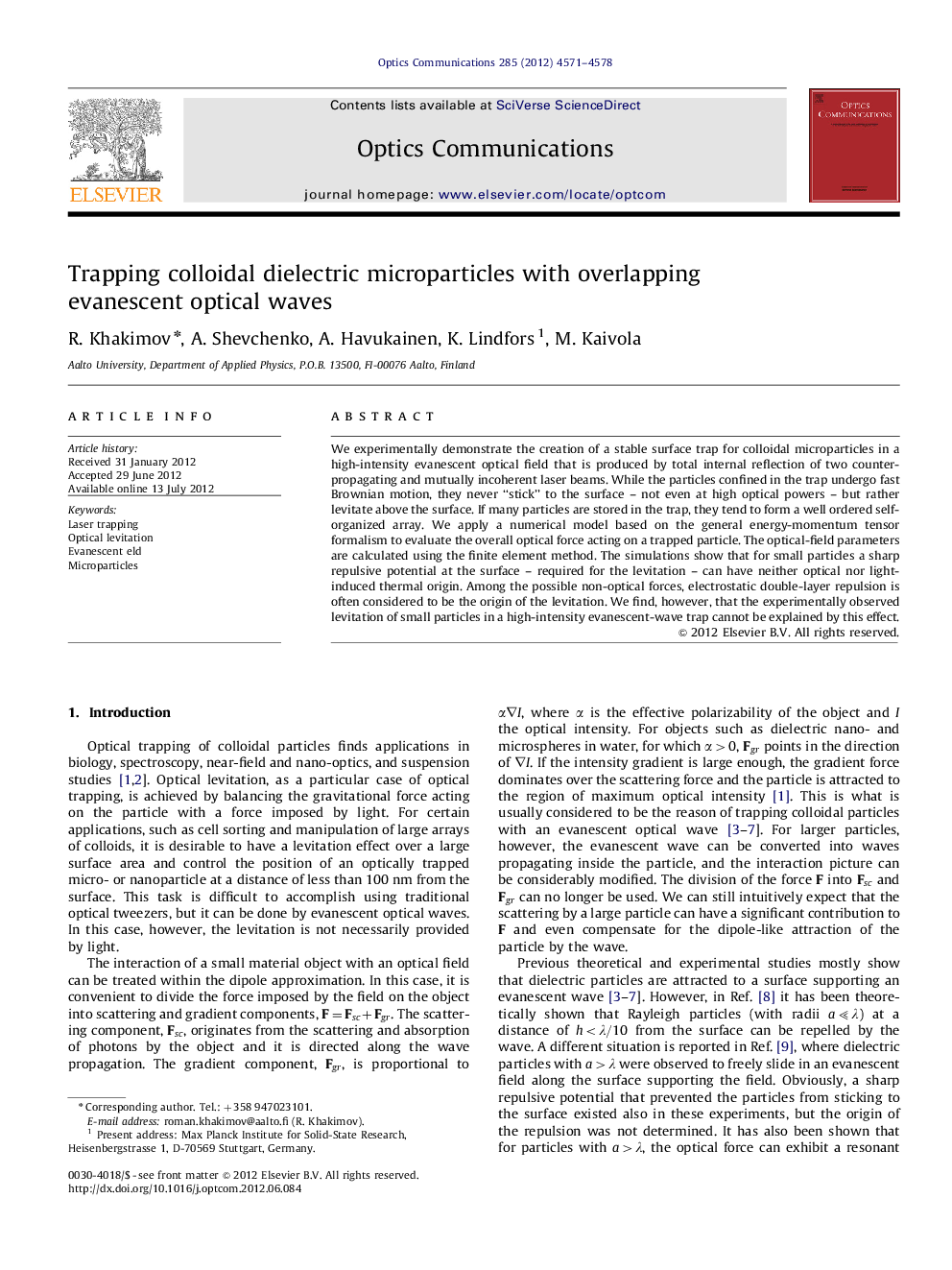| کد مقاله | کد نشریه | سال انتشار | مقاله انگلیسی | نسخه تمام متن |
|---|---|---|---|---|
| 1535993 | 1512636 | 2012 | 8 صفحه PDF | دانلود رایگان |

We experimentally demonstrate the creation of a stable surface trap for colloidal microparticles in a high-intensity evanescent optical field that is produced by total internal reflection of two counter-propagating and mutually incoherent laser beams. While the particles confined in the trap undergo fast Brownian motion, they never “stick” to the surface – not even at high optical powers – but rather levitate above the surface. If many particles are stored in the trap, they tend to form a well ordered self-organized array. We apply a numerical model based on the general energy-momentum tensor formalism to evaluate the overall optical force acting on a trapped particle. The optical-field parameters are calculated using the finite element method. The simulations show that for small particles a sharp repulsive potential at the surface – required for the levitation – can have neither optical nor light-induced thermal origin. Among the possible non-optical forces, electrostatic double-layer repulsion is often considered to be the origin of the levitation. We find, however, that the experimentally observed levitation of small particles in a high-intensity evanescent-wave trap cannot be explained by this effect.
Journal: Optics Communications - Volume 285, Issues 21–22, 1 October 2012, Pages 4571–4578